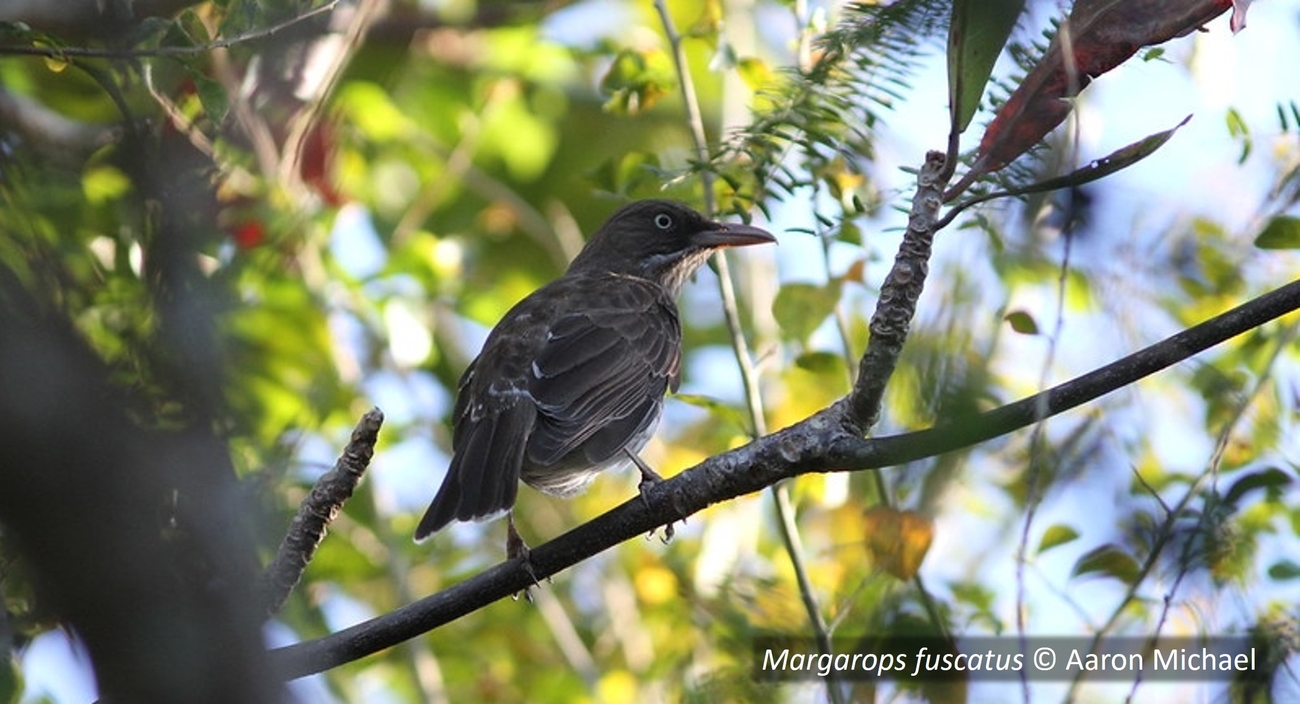Managing and conserving game species is a major challenge. To make informed and objective decisions, it is crucial to first gather rigorous scientific knowledge on the ecology and biology of these species, as well as the state and dynamics of their populations. In Martinique, the ESPACYPA project is addressing this need by focusing on several understudied bird species. Now, a year into the project, it’s time to take stock.
It’s six in the morning when Bryan Leborgne, in charge of the project in Martinique, begins his descent between Montagne Pelée and Le Prêcheur. After covering dozens of kilometers by car, he now continues on foot, carrying several kilograms of equipment on his back, to tackle the last few kilometers separating him from his objective. Serendipitous encounters with wildlife and the unexpected discovery of Martinique’s lush landscapes make each step an experience of wonder. Along his carefully planned route, Bryan strategically places devices that discreetly study many of the island’s species, capturing fleeting moments of Martinique’s wildlife.
Massive deployment of telemetry devices
After working for several months in Guadeloupe on the ESPACYPA project, Bryan now travels across Martinique to install camera traps and acoustic recorders. These two key technologies, also used in many other association projects, allow for discreet study of Martinique’s wildlife, focusing particularly on the six species the project targets: the White-crowned Pigeon (Patagioenas leucocephala), the Scaly-naped Pigeon (P. squamosa), the Bridled Quail-Dove (Geotrygon mystacea), the Ruddy Quail-Dove (G. montana), the Pearly-eyed Thrasher (Margarops fuscatus), and the Scaly-breasted Thrasher (Allenia fusca).
The telemetry devices allow for non-invasive study of wildlife in its natural habitat, with minimal disturbance compared to other tracking methods such as binocular observation or capturing. Once installed, these devices collect non-selective data: photos or videos of any animal passing in front of the camera, or audio recordings of surrounding calls and sounds. The amount of data gathered is as vast as it is varied, offering insights into the presence, abundance, ecological preferences (habitat type, daily rhythm), and even behavior of numerous species.
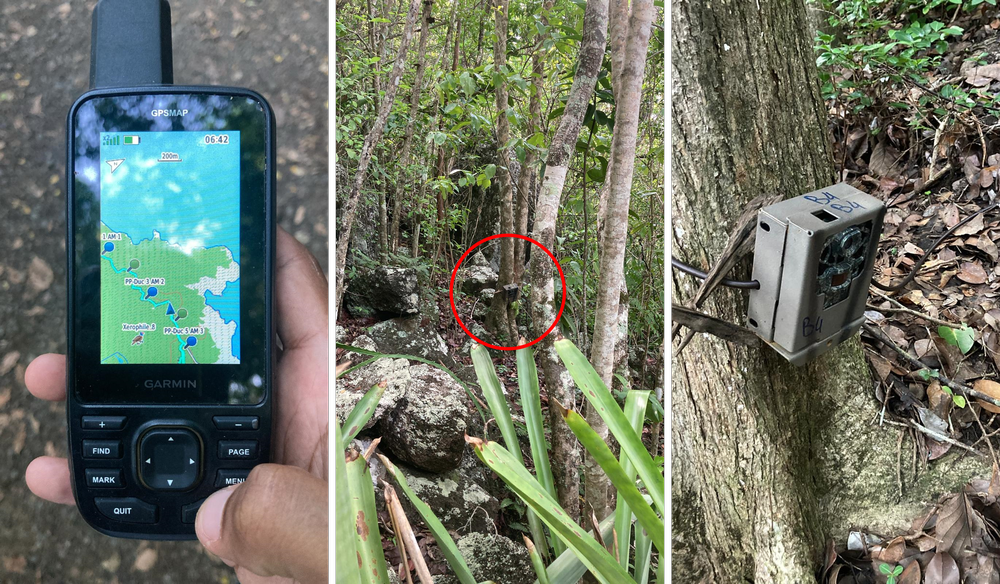
The devices are very discreet, placed deep in the forest out of sight, and only a GPS can locate them.
The devices are not deployed randomly: a total of 45 sites have been selected across Martinique, representative of the various habitat types and their proportions, such as dry forests, wet forests, mangroves, and swamp forests. At each site, five camera traps and three acoustic recorders are deployed and remain active 24 hours a day for two weeks before being moved to a new location.
Studying the Scaly-naped Pigeon

Scaly-naped Pigeon (Patagioenas squamosa) © Postdlf
In parallel with the telemetry techniques, other methods were employed during the first year of the project. While no individuals were captured for examination, hunting activity on the island provided direct access to key parameters for a more in-depth study of these species. Christopher Cambrone, scientific coordinator of the association’s projects, was able to strengthen the data on one species in particular, the Scaly-naped Pigeon, through measurements taken on individuals harvested by hunters. This collaboration with local hunters allowed the collection of both morphological data and genetic samples. Analysis of these samples will provide details on age structure, sex ratio, and the genetic diversity of the population.
One year in, and already promising results
Gathering qualitative data is a long-term endeavor. Although the project is planned to last several years in Martinique, the first year has already yielded promising results. A total of 300 individuals, including 115 adults and 185 juveniles, were examined during the analysis of hunting records. The measurements provide morphological insights into the species. As for remote tracking methods, the devices were deployed at around 40 sites across Martinique, representing a total of 200 sampling points for the camera traps and 121 points for the acoustic recorders. This extensive coverage has so far resulted in the collection of over 75,000 images and nearly 7,000 hours of audio recordings.
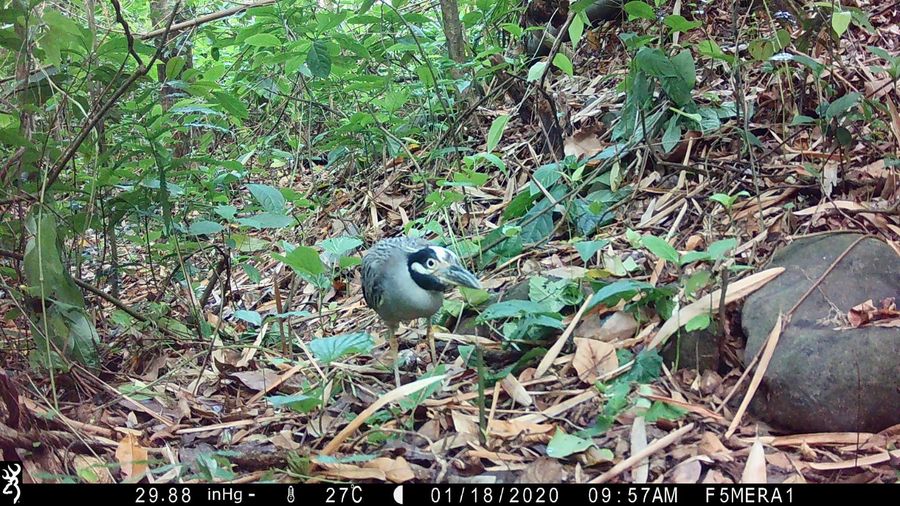
Many species are captured by camera traps, including species not targeted by the project such as this Yellow-crowned Night Heron (Nyctanassa violacea).
The project continues
One year after its launch, the ESPACYPA-Martinique project has already achieved significant milestones. It is expected to continue over the next two years with varied objectives. The deployment of remote tracking technologies will continue in the field, providing a more comprehensive view of the studied species. A significant effort is now being put into data analysis, already initiated by Bryan, which relies on artificial intelligence to process the vast amount of collected files, both photographic and audio, as well as specific statistical tools.
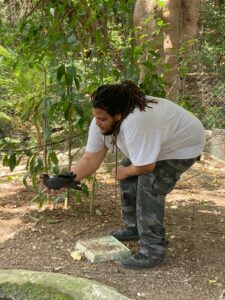
Christopher Cambrone with a pigeon equipped with a fake GPS tag.
New techniques are also expected to be introduced in the coming months. The use of GPS tags is planned to track several individuals of the Scaly-naped Pigeon and White-crowned Pigeon. However, installing such devices on animals may lead to behavioral changes. Preliminary experiments in aviaries have already provided insight into the reaction of several individuals to handling and the installation of dummy tags on their backs. Behavioral assessment of the impact of the devices on the birds will continue, this time using surveillance cameras installed in the aviary, to refine the protocol for using the methodology in the wild.
Lastly, a significant part of the work will focus on disseminating the results. Since the studies are long-term, scientific articles are planned for the final phases of the project. In the meantime, preliminary results were presented to our partners during a meeting on September 25, 2024. This meeting also helped strengthen our collaborations and plan the next steps of the project. The long-term goal remains unchanged: to acquire precise data to improve the management of the studied bird species.
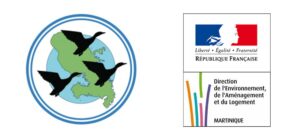
The ESPACYPA-Martinique project is co-financed by the Fédération Départementale des Chasseurs de Martinique and the DEAL Martinique.

